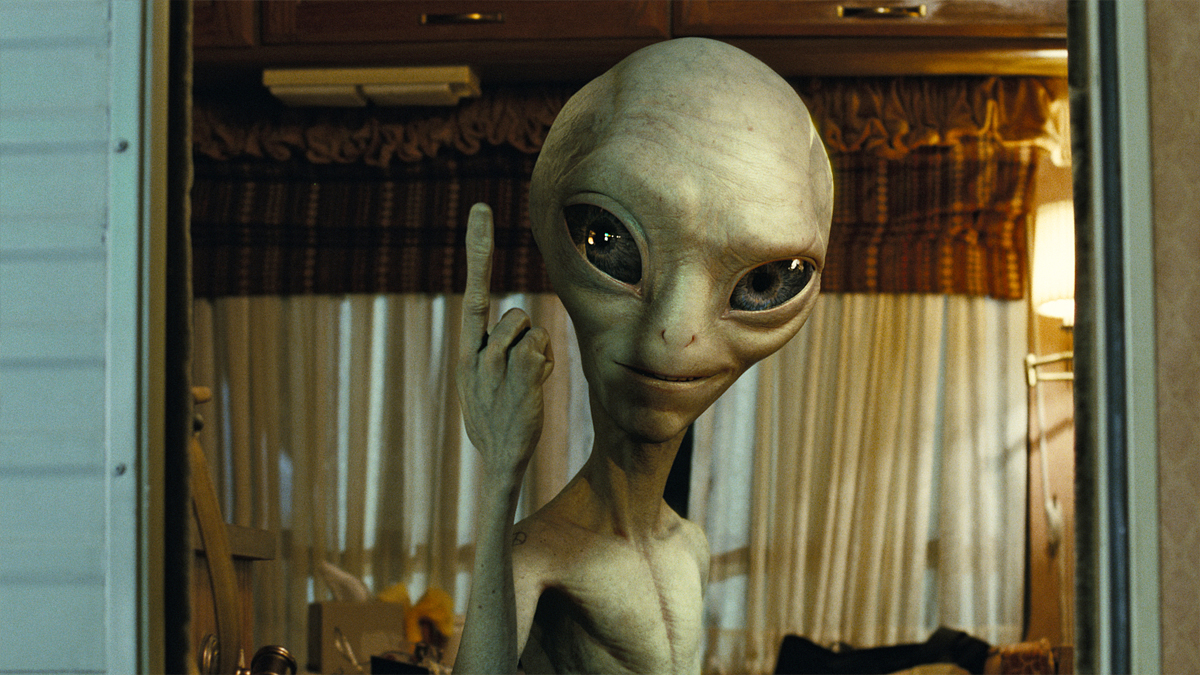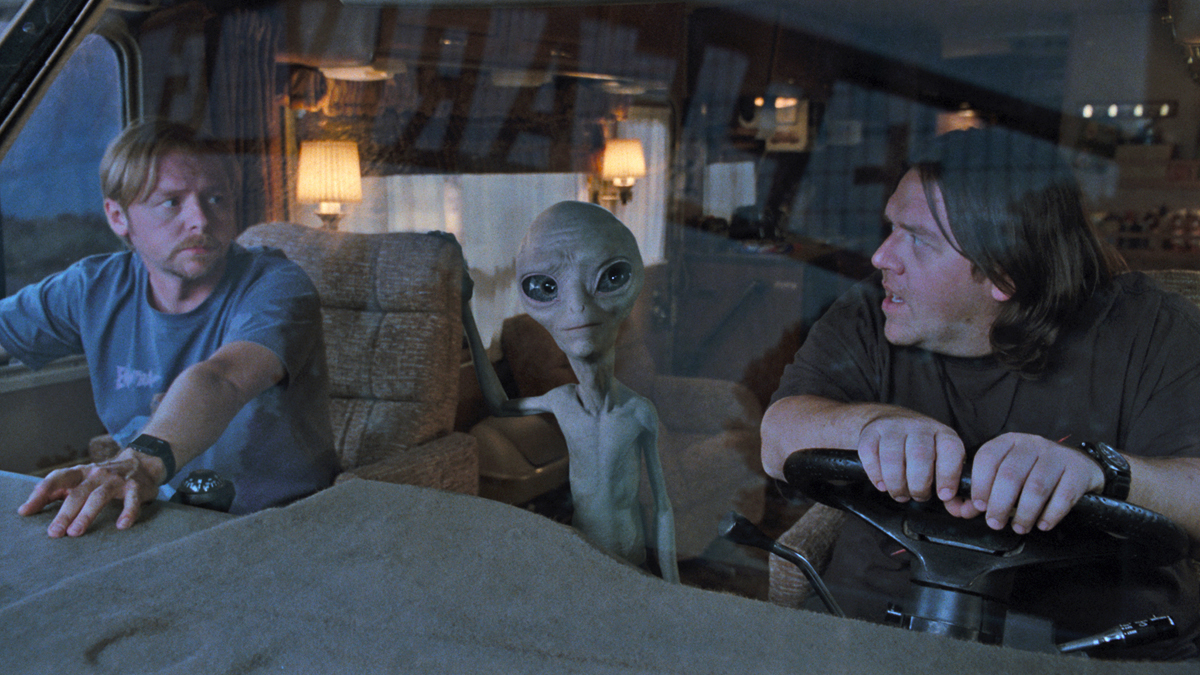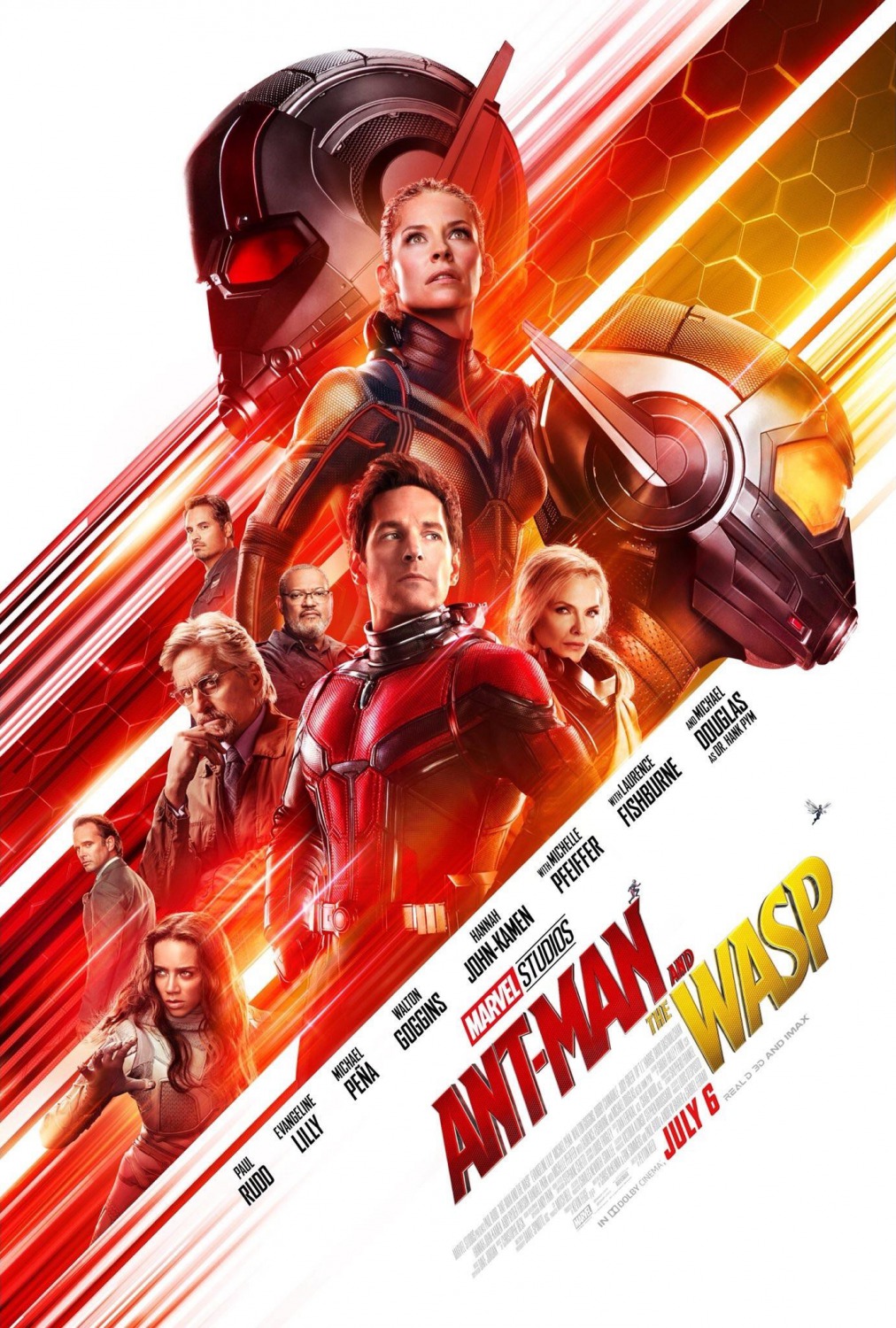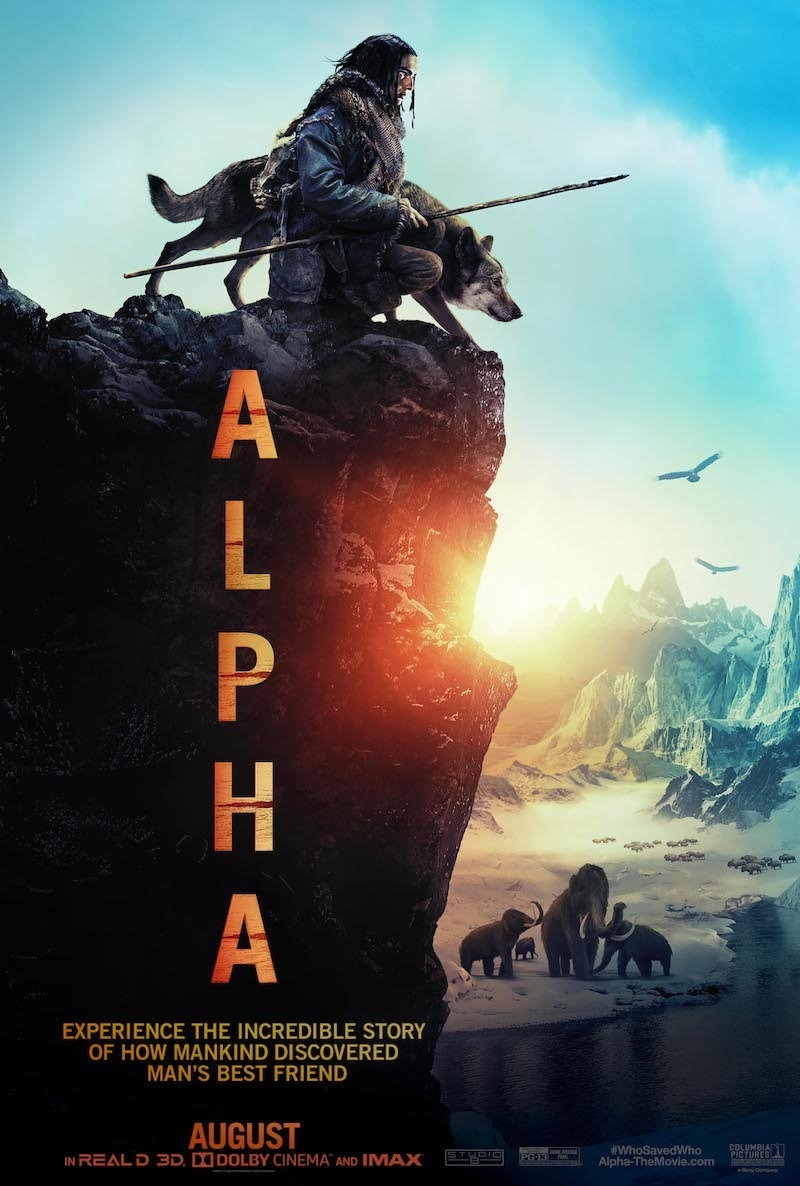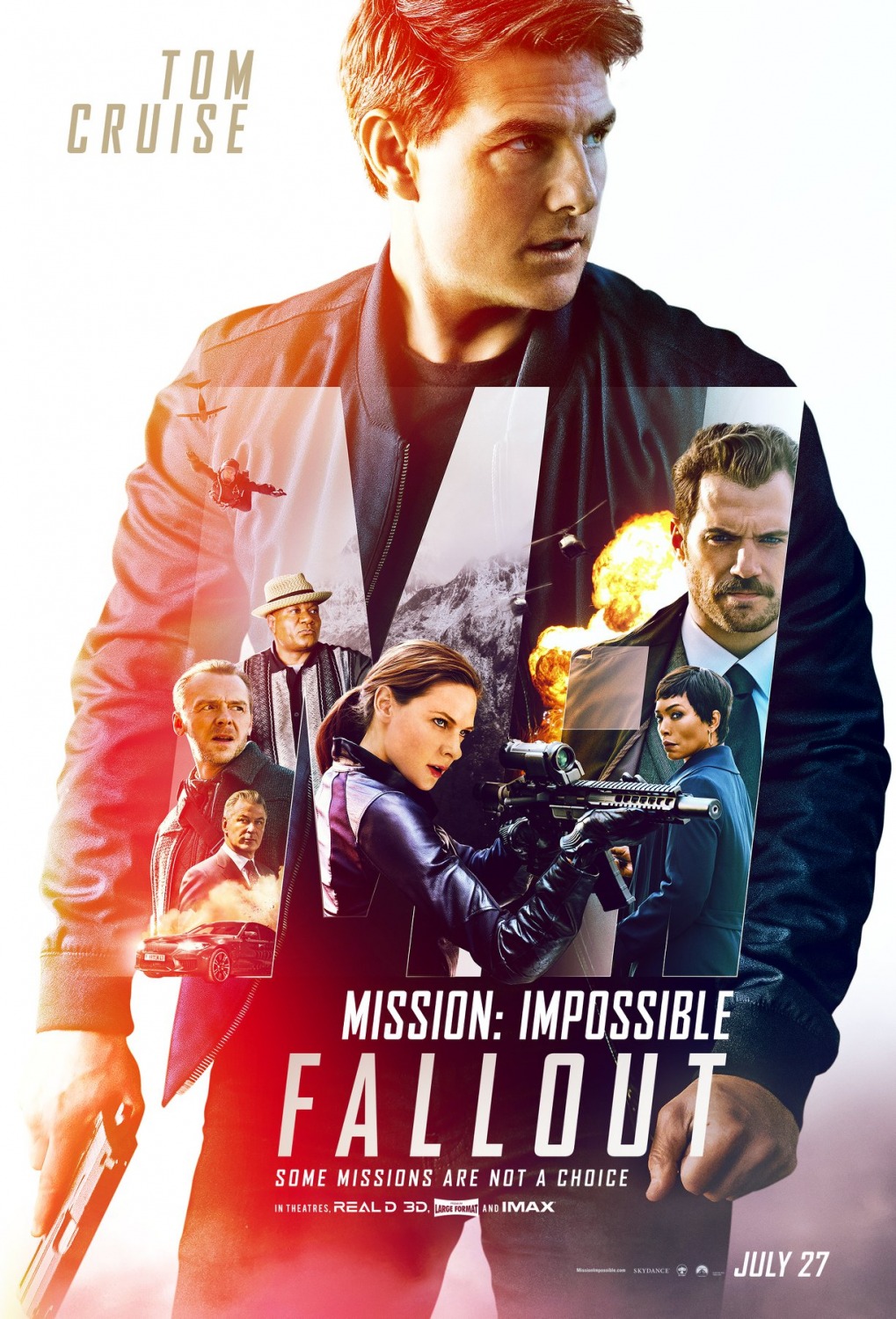Anders Beer began his animator career in 1996 at Dreamworks SKG, he then worked in many studios like Banned from the Ranch, Digital Domain and Sony Imageworks. He has participated on movies such as SPAWN, LAKE PLACID, OPEN SEASON or REIGN OF FIRE. At Double Negative, he supervised the animation of the Tooth Fairies sequence on HELLBOY 2.
What is your background?
I studied for two years at the Boston School of the Museum of Fine Arts, and two years at California Institute of the Arts. I got my first job at the newly formed Dreamworks SKG in 1996 and worked on the early development of SHREK. Since then I have always worked with character based content, primarily as an animator or animation supervisor, but also as a rigger and modeler. Most of my work has been in feature animation and VFX at studio’s like Disney, Sony Imageworks, and Digital Domain, but I’ve also done commercials and spent a few years doing interactive work for Nvidia and Harmonix as well. I co-created two short films in the late 90’s called IL GRINGO and LOS GRINGOS.
How is the collaboration with the director?
Working with Greg Mottola was a great experience. His VFX exposure before this film was very limited, but he adapted quickly to the work flow and was very supportive. Greg really took advantage of what our artists, in particular our animators could do with regards to developing “Paul” as a character.
Greg presented every scene in the film to us with a turn over briefing in person or via cine-sync session. He would brief us on how he envisioned Paul’s performance and would point us to any reference he felt would steer us in the right direction. Greg is a great collaborator and was always open to our questions and idea’s.
I would expand on Greg’s briefing with the leads and animators to plan the best approach for each shot. The next time Greg saw the scene would be after we’d done a rough blocking pass to convey only the most essential information for any given shot (timing, geography, energy level of performance). Greg was able to look at very rough animation and understand our intentions pretty well, which made it that much quicker for us to tailor Paul’s performance to his needs.
What was the biggest challenge on this movie?
Paul is a 4ft tall classical style “Grey” alien. He has massive almond shaped eyes at opposing 45 degree angles, a huge bald head, no ears or nose, a small jaw, long thin neck and limbs. He is the exact physical opposite of 5’11” tall voice actor Seth Rogen. Creating a performance that captured all of Seth Rogens charisma and charm, but felt believable and appropriate for Paul was a challenge. Finding the right performance and keeping it consistent across nearly 300 shots performed by dozens of animators was not easy either.
And it wasn’t just the animation, the lighting plays a massive part in how Paul comes across on screen. It can really make or break the animation. The lighters and compositors have to make sure they match to the photography or else Paul stands out like a chrome teapot, yet matching perfectly to the plate often meant some subtle animation was lost in shadow or reflected light. We all had to work very closely together to ensure the lighting and animation supported one another.
How was the shooting of Paul’s interaction with the actors?
We did a dry run of most shots using various forms of stand in. The most common stand in was “Mr. Eyeballs”, an adjustable rod based stand with two ping-pong balls for the eye line. We also used a few puppets for stand ins. When Clive is grabbing Paul by the neck we covered Paul puppets head with green screen cloth to get a matte where his hands were, and to give Nick Frost something to hold on to.
Sometimes we would use a live stand in, like for the shots where Paul is wearing a cowboy outfit and walking with Clive and Graham. For those shots a young boy wore the costume and we replaced the head.
There are a few interaction shots where Paul’s hands are puppeteered, like when you see Paul’s hands on Zoil’s face at the farmhouse.
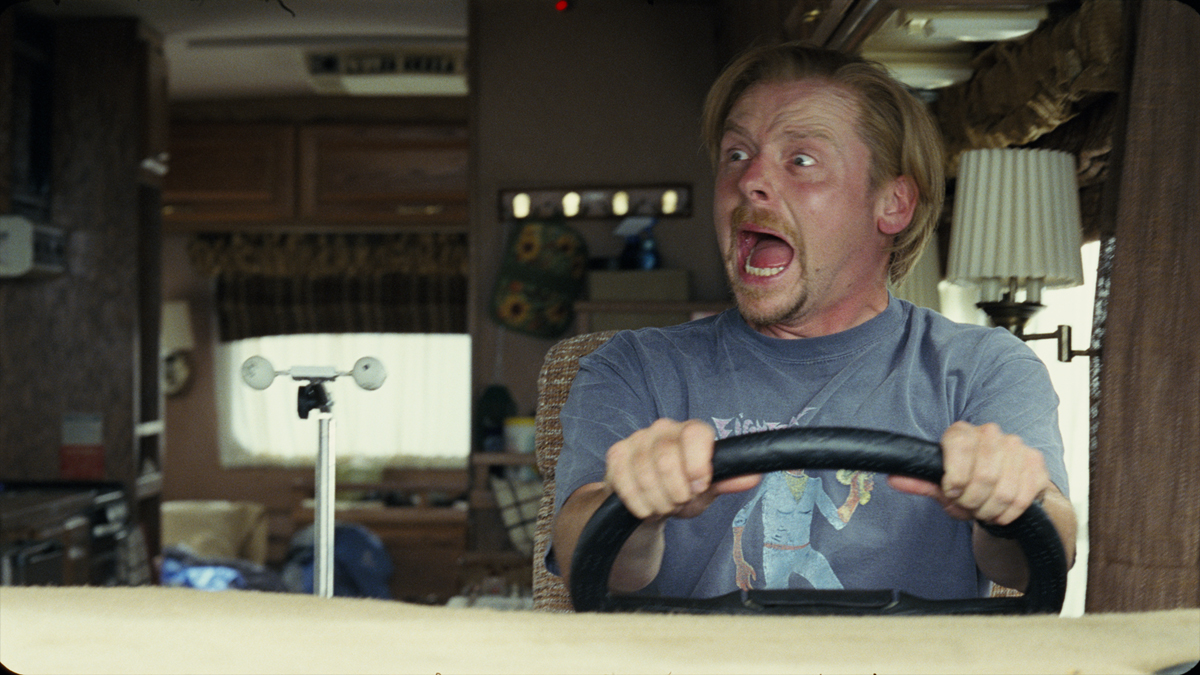 |
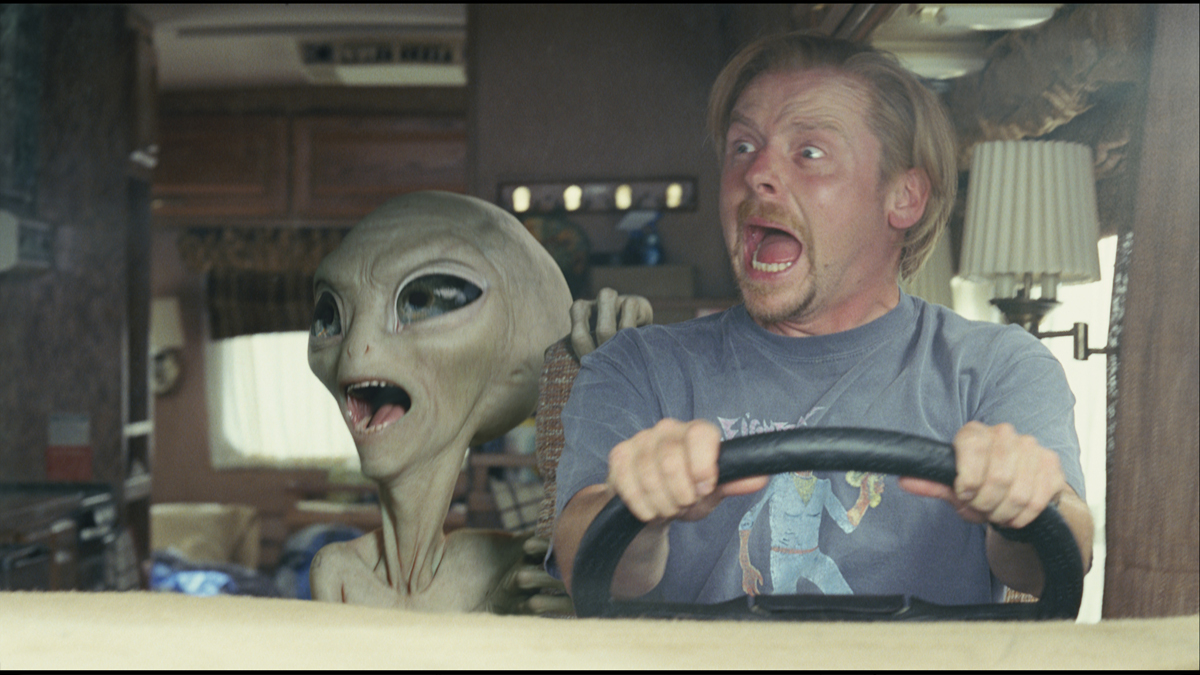 |
Did you block the acting of Paul in previz?
Only a few select sequences were ever prevized. They were shots that involved big camera moves. For example, the scenes where Paul is being chased to the RV by Moses and the UFO taking off at the end.
What are the proportion of motion capture and keyframing?
There are only 4 shots I would say actually used motion capture data in anything close to the conventional sense. One for example was Paul running out of the comic book store naked. For that shot animator Nathan McConnel put on the XSENSE MVN suit we have in house and ran across Romilly Street in Soho while Simon Kay our resident mocap tech recorded him on a laptop (there is a picture of him doing this). He then cleaned up the data, added hands and facial animation.
Motion capture of Seth Rogen was only recorded during an initial rehearsal before principle photography and was primarily to help develop our rig and animation pipeline. The data was too out of context for use in what was shot and edited later. For the facial animation, everything was keyframed. For lipsync we worked heavily from video reference.
Seth performed most of his lines in sound booths where we recorded his face to video using several witness cameras. This meant most of his lines were delivered while standing at a lectern, reading and watching a big screen projection of the edit and often some rough animation. Additionally, Paul’s proportions are so exaggerated, motion capturing even a very short actor and applying the data straight to Paul tended to look like someone wearing a “Paul suit” as opposed to something believable.
I encouraged animators to shoot their own video or motion capture reference for all of their work. The animation leads and I would often assist with this process and then I would sit with the animators and select a performance that best fit Gregs brief. This allowed us to get through blocking very quickly and provided a good physically plausible foundation for timing and movement.
With the moven suit, animators could set up capture time in a room on site and record as many takes as they could fit in their allotted time. It did not include any face or hand/finger data, but since it was on a simple Paul rig and editable, it made for great reference and could even be shown to the director in some cases as rough blocking.
With the video reference, since it is only two dimensional you needed to shoot using a similar camera angle, and could not really show the raw footage to the director in place of blocking: But, it was very easy for an animator to just sign out one of the shows “flipcam” video camera’s and record a dozen takes in private, or with other animators. Video does not exclude the face, hand, fingers, props or multiple actors. For short shots, it was often faster to shoot video and block in a performance from that than it was to use the moven suit.
Did you change a lot of things on the Seth Rogen acting once you put it on Paul?
It varied from shot to shot depending on what Greg was after. We always needed to keep the essence of Seth alive because he brings such charisma and charm. But, as I mentioned, for the majority of the shots Seth was recorded in a sound booth where he really was just reading in front of a big screen so the physical performance was down to us. In some cases, we really needed to create something from scratch because the lines had either not been recorded yet, or Greg was after slightly different context.
How did you approach the problems of interaction with the different environments?
We had Daniel Pastore and his match-move team that delivered tracked cameras, sets, props, and even actors. So when the animators or lighters started a shot, they would load up a tracked scene file in maya which had all the necessary elements they would need to calibrate Paul or any other element to the plate. And in the few cases where this needed to be adjusted due to last minute changes, animators, lighters and compositors worked together to keep the illusion intact.
We also had Julian Foddy an amazing CG supervisor who worked tirelessly to coordinate FX artists doing smoke, dust and debris, regularly building his own props and doing his own FX animation.
In the lighting stage, lighters and compositors worked with loads of HDRI photography we shot on set as well, and reference film of a puppet moving through the set lighting. All this was fine for getting the base lighting started, but to really make Paul sit in the plate, and look like he was lit by the DP, the lighters and compositors spent a lot of time tailoring the lighting for every shot in the film.
Have you improvised some Paul reactions according to the acting of the others characters?
We certainly did a lot of that. And in some cases, we had to adjust the eyes of the actors in compositing to accommodate where Paul needed to be for the edit to work.
 |
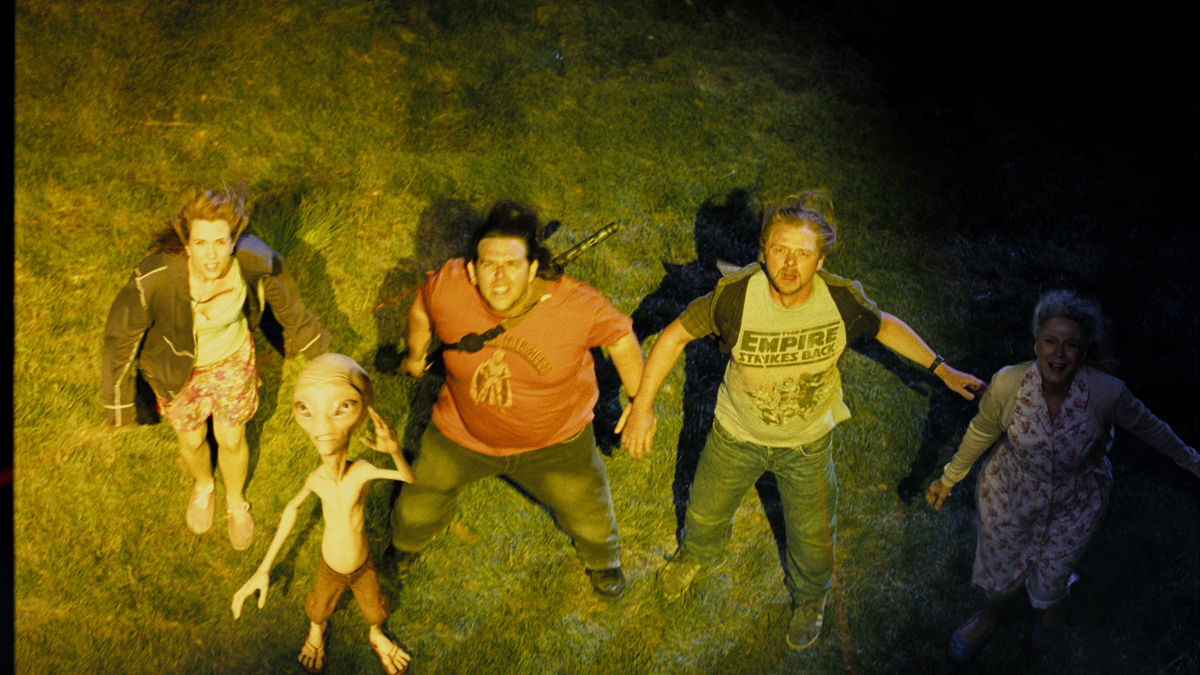 |
What animation rig did you created especially for facial animation?
A majority of the face rig is done using blendshapes created by my self and a modeler named Markus Schmidt. Grant Laker tied it all together and also provided a robust eye rig using various standard and custom maya deformers he designed.
The body rig was based off of a custom rig designed for Paul by Theo Facey and further developed and maintained by Ramiro Gomez using standard and non- standard maya tools.
There are a variety of blendshapes used to aid in Paul’s physique as well as a muscle system used in some shots to help with volume preservation and definition. There is also some nice skin sliding going on around the chest and neck.
Animators and lighters could work with the rig in various levels of detail to help speed up interactivity.
Can you explain how you prepare your animation process?
After getting a shot turn over and briefing from Greg Mottola, I would go over the shots and create an animator casting list. I tried my best to cast shots in sequence. In some cases I could give an entire short sequence to one animator, but most scenes were large and had to be broken up between 2-4 different animators. I broke up the sequences where there were distinct changes in Paul’s tone or timing when possible as this would allow for better perceived consistency when a scene had shots that transitioned from animator to another.
I had two animation leads who I relied on to set the standard of animation on the show and provide regular support for the animators when I was not available. Dave Lowry and Scott Holmes. I would discuss my casting choices with them and get any feedback or concerns they might have specific to what the scene would require.
I would then have my own turn over meeting with the animators cast to a given sequence and would discuss Gregs briefing, outline my concerns, recommendations, then suggest reference and acting choices.
The animators would go off and shoot reference, either video or moven suit. Talk about it with their peers and the leads, then show me a selection of their top choices. The reference was shown cut into the scene using DNeg’s own editing software called “clip”. This would allow them to always work within the context of the latest edit. I would make my recommendation and they would block in a rough pass using the rig.
If the rough blocking pass conveyed the idea clearly and it worked in the edit, I would show it to Greg for approval to go on to animation. Animation is where the finer details were worked out, facial animation, and higher fidelity on the weight and timing of the performance. Blocking is where idea’s were explored in broad strokes. Once a shot was approved in animation, it meant the idea was working well and we would then dial in the lip sync, facial subtleties, add breathing, physique changes and physical contacts and make sure it all read clearly when lit.
I tried to have regular “weeklies” animation team meetings. I would cover developments on the show like changes to the edit, new lines of dialogue added, the best methods for keeping Paul “on model”, ensuring animation was working in lighting, and exemplifying where Paul’s performance was strongest or weakest. I would also have riggers walk through any rig updates or new animation tools and singled out certain animators with highly effective workflows to give presentations on how they worked.
The client played a big part in helping me keep the animators engaged and aware of how Paul’s performance was working in the film by allowing us regular attendance to screenings. This was also great for morale since everyone really enjoyed the film.
What are your inspirations and what references did the director gave to you?
I have been inspired by so much work over the years, it is hard to render it down to a simple answer. I am fortunate enough however to work for a very inspiring boss, head of animation Eamonn Butler. His creative opinion, experience and support were some of the most valuable resources on the show.
Greg Mottola, Simon Pegg and Nick Frost were very specific about choosing Paul’s design and voice talent. They empowered us to find the right balance between these two almost opposing forces. Despite Seth’s physical differences, he was still the primary point of reference.
They were also all very vocal about what they wanted Paul NOT to be. He was not to be a cartoony alien or a creepy or spectacular alien”. He needed to be Alien, but understated so he would quickly become “one of the guys”.
Can you tell us what was the hardest thing to animate on this project?
Paul was always a challenge. There probably isn’t one specific shot that was ‘the hardest’, but I would say the hardest thing was to keep Paul consistent, believable and appealing in almost 300 shots with dozens of animators.
Was there a shot or a sequence that prevented you from sleeping?
There isn’t one particular shot or scene, but it was very difficult calibrating how the animation performance looked in maya to how it looked lit and rendered. Paul was lit to match the plates we filmed, and his final look involved a lot of subsurface shading and shutter blur specific to the film and camera on set. At one point, a lot of Paul’s definition and range of expression was getting lost beneath the complexities of his final look.
Our crew worked together very well though and in the end we were able to get a very good calibration between animation, lighting and compositing.
How long have you worked on this film?
I actually helped out on the proof of concept for Paul back in early 2008 when the film had not yet been greenlit and DNeg was still bidding on it. I took an 8 month break from VFX and worked at a video game company in my home town of Boston before coming back to supervise the animation in May of 2009. So cumulatively I have been on the show for about 2 years.
How many shots have you made and what was the size of your team?
My team averaged about 24-26 animators. At one point we had 36, and during the last of production week I worked alone. I only have a hand-full of shots that I did my self, but I worked on lip sync, facial, finishing touches and changes for a little over 80 shots.
What did you keep from this experience?
This was a rare and wonderful challenge for an animation supervisor. A rated R live action comedy where you are responsible for the title character does not come along that often. Even better, it started as an idea I really liked and ended as a film I really enjoy.
Even the greatest VFX crew is only as strong as their relationship with their client. On Paul, we had a really great crew plus an incredibly supportive and enthusiastic client.
What is your next project?
A big vacation. I’ll be the first to sign up for Paul Two if they decide to make one (laugh).
What are the 4 movies that gave you the passion of cinema?
Ok, if it’s only 4… STAR WARS, RAIDERS OF THE LOST ARK, MIDNIGHT COWBOY and DELICATESSEN.
A big thanks for your time.
// WANT TO KNOW MORE ?
– Double Negative: Dedicated PAUL page on Double Negative website.
– fxguide: Article about PAUL on fxguide.
© Vincent Frei – The Art of VFX – 2011


